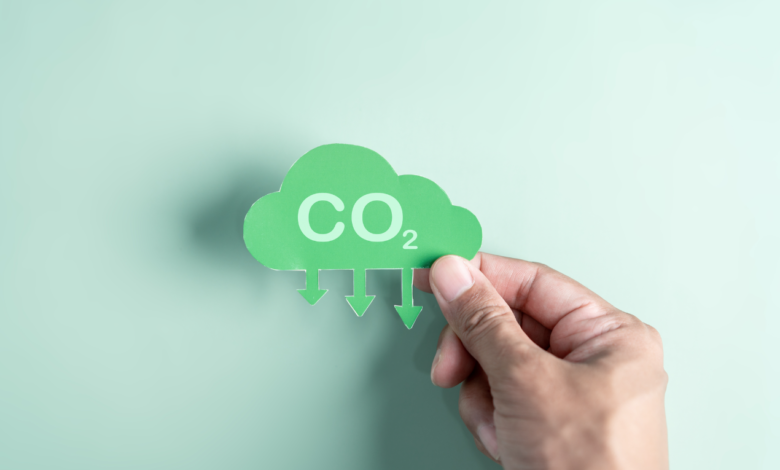The CO2 concentration in the atmosphere has never increased so much as in 2024

El Niño contributes to increased CO2 concentration, but the main cause remains fossils
The first four months of 2024 mark a new record of the increase in CO2 concentration in the atmosphere. The leap is particularly large in March. Compared to the same month of the year before, the surveys report an increase of 4.7 parts per million (ppm). The value is high also thanks to a relatively low level in March 2023, but it is also record for January and February 2024. In April the increase was more contained, but just below the previous record that dates back to 2016.
“Unfortunately, we continue to break records in the CO2 increase rate,” said Ralph Keeling, director of the CO2 program at the Scripps Institution of Oceanography at UC San Diego. “The ultimate reason is the continued global growth in fossil fuel consumption”.
CO2 Concentration in the atmosphere, El Niño’s tail stroke
It is no coincidence that the two years with the greatest increase in CO2 concentration in the atmosphere are 2024 and 2016. Both are characterized by the final stage of El Niño. The “Child” is a cyclic phenomenon that relates to the natural variability of the Earth’s climate system (it does not depend on human activities) and contributes to increasing the global temperature by a few tenths of a degree.
It is also (not exclusively) due to the presence of a very intense Niño in the second half of last year that 2023 has reached an unprecedented level of global warming, +1.48°C according to the European Copernicus system. But the Child also affects the amount of CO2 in the atmosphere, increasing it.
“CO2 concentration tends to increase particularly rapidly towards the end of El Niño events. Previously, the fastest growth rate of greenhouse gases occurred at the beginning of 2016, at the end of the El Niño season“, explains the US institute, which is based on surveys at the Maunakea observatory in Hawaii. (The instrumentation was installed on the island in 2022 to check that the data of the historical observatory, in nearby Maunaloa, were not altered by the eruption of the island volcano).
Of course, El Niño is only a contribution, it does not explain in full such a substantial increase in CO2 concentration. The main factor behind this growth is fossil consumption. “The surge in growth due to El Niño has been added to the long-term increase in CO2 growth linked to the increase in fossil fuel emissions, which have increased by 5% since 2016,” the institute specifies.
2024 beats 2016
The biggest leap so far was between June 2015 and June 2016, when CO2 had increased by 4.1 ppm year on year. March 2024 surpassed it by as much as 0.6 ppm. Also January and February are higher than those of the same months of 2016, respectively with increases in CO2 concentration of 3.4 ppm (against 2.6 of 8 years ago) and 4 ppm (against 3.7 of 2016). Only April, in the 1st quarter of this year, grew less than the same month of 2016, with +3.6 ppm.
“But taking into account the first four months of 2024, the growth rate is well above that of 2016,” the institute stresses. “If this El Niño follows the pattern of the last El Niño, the world could experience a very high growth rate for many more months”.
What does the carbon dioxide concentration data tell us?
Measuring the accumulation of carbon dioxide in the atmosphere is one of the most reliable indicators to test the pulse of the climate crisis. CO2 is the main greenhouse gas. The more it increases, the more the atmosphere retains the incoming heat on the Planet through solar radiation, which otherwise would be dispersed into space. Because it remains in the atmosphere for decades or centuries, its concentration affects Earth’s temperature in the long term and does not manifest immediately. So today’s CO2 levels would allow the global temperature to continue to rise, even if, hypothetically, we zero all emissions immediately.
“This recent surge shows how much more we need to do to stabilize the climate system,” Keeling said. “Stabilization will require that CO2 levels begin to decrease. Instead, CO2 is increasing faster than ever”.
Before the industrial era, carbon dioxide values had remained stable at around 280 parts per million for about 6000 years. At the end of World War II, it was 310 ppm. During the oil crisis of the 70s, there were 335 ppm. Then the acceleration begins: 353 ppm in 1990, 368 ppm in 2000 (+15), 388 ppm in 2010 (+20), 412 ppm in 2020 (+24).
In May 2023 – the month in which the annual peak is normally recorded, before foliation in the northern hemisphere, the concentration of CO2 in the atmosphere had reached 423.78 ppm.





